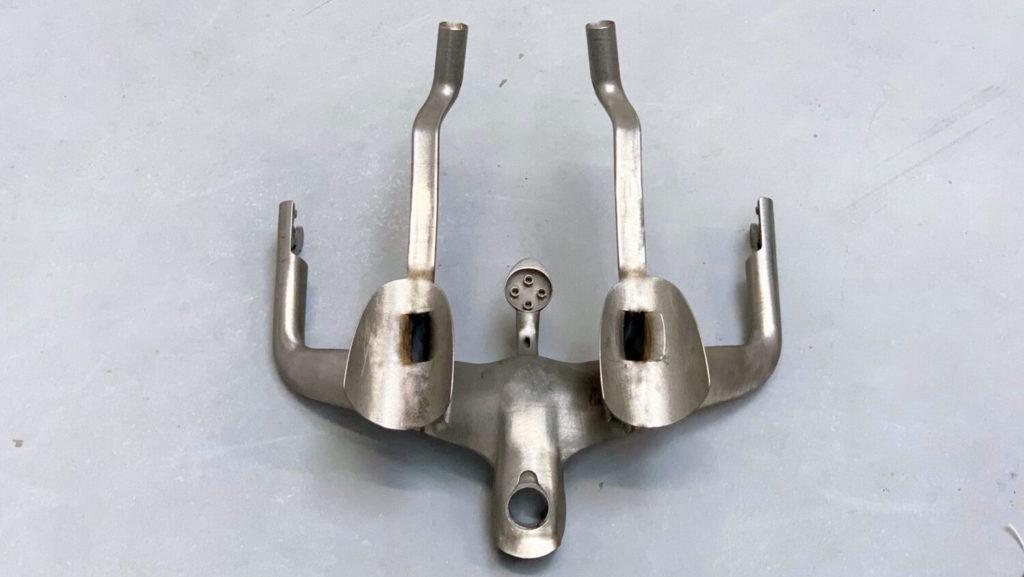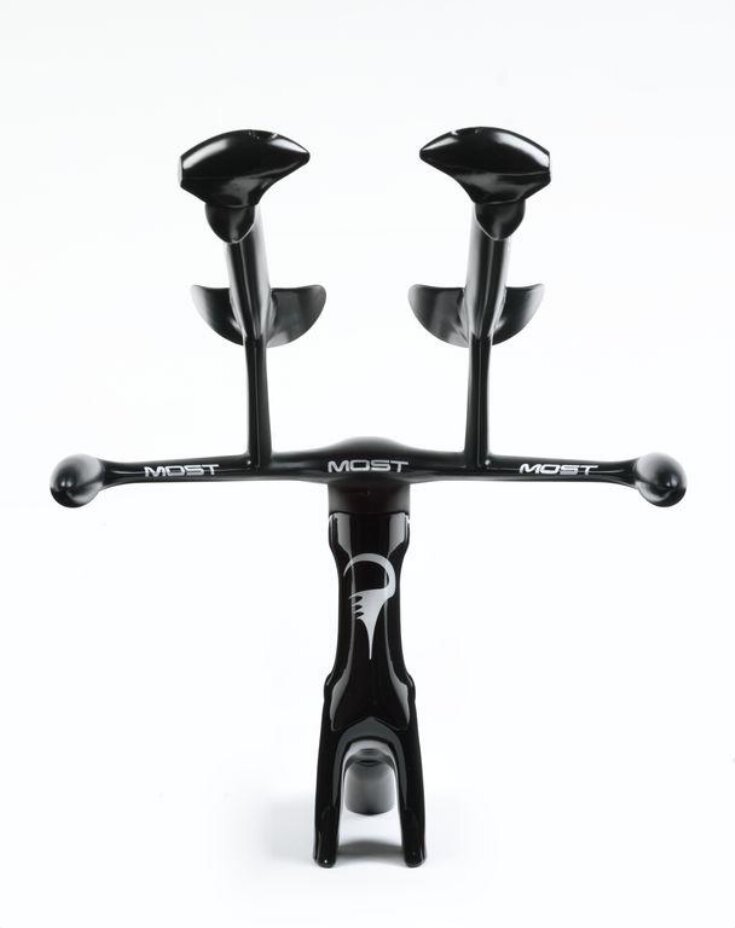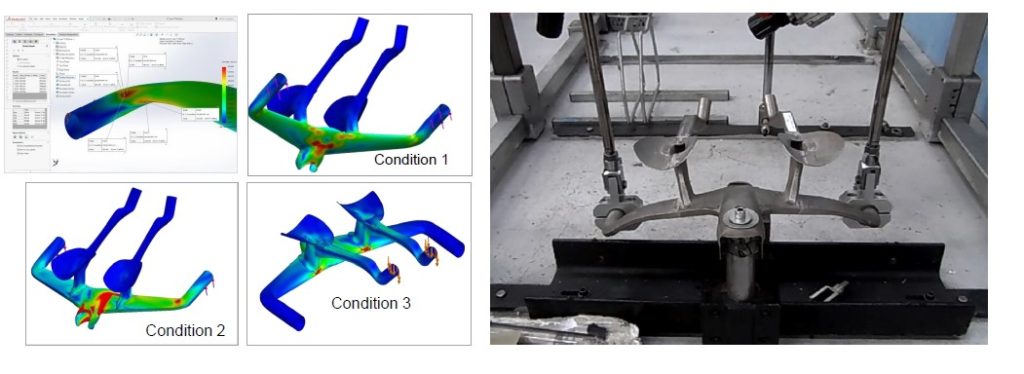Dimitris Katsanis’ life has been steeped in cycling. He sprinted on track bikes before studying composites in college. He started making carbon fiber bike parts in 1996 and has made parts for Olympic cycling teams since 2002. He first rose to prominence by contributing to Team Great Britain’s successful track bikes in 2008 and 2012’s Olympics. Due in part to parts designed by Katsanis, the British won eight gold, four silver, and two bronze in 2008 and eight gold, two silver, and two bronze in 2012 in cycling. In 2008 the team won more golds in cycling than it had the previous seven Olympiads combined. Since then, Katsanis has designed frames and components for iconic road bikes, several professional cycling teams, and many Olympic teams. The company’s parts were also used in over 200 additional cycling medals. Numerous Tour de France and many Olympic medals have been won on frames designed by Katsanis.
Katsanis’ UK-based company Metron Additive Engineering 3D prints bike, motorsport, aerospace, and medical components. They acquired a GE Arcam Q10 EBM machine in 2015 and have now added a Q20 to their arsenal. The company also has an EOS M400 on which they run Scalmalloy. Indeed the company has been qualified by APWorks as an APWorks Production partner. Metron uses many Scalmalloy parts because the high-strength aluminum performs so well and uses Ti64 for many of its components.
Katsanis told me that he loves “Scalmalloy, which is the strongest commercially available Additive Manufacturing aluminum that you can get…with the highest validated properties.” He also said that one often overlooked advantage to the material is “that it is very easy to work with, especially the heat treatment is simple, and it doesn’t require quenching. Scalmalloy’s yield strength is double that of other competing materials, and that lets you often use half the material in a part.” For components with sub-millimeter wall thicknesses, he prefers titanium but generally, he’s a huge fan of Scalmalloy.

Metron has additively manufactured hundreds of handlebars. Image courtesy of Metron Additive Engineering.
Thin walls, material reduction, and good performance are ideal for making low-weight cycling components. Another especially important consideration is safety. Testing and quality, as well as simulation, are required to make bike components. After all, as Katsanis says, riders in descent are going “100 km an hour going down the mountain wearing lycra.” A few Tour de France’s ago, he even had quite the scare when a rider biking using 3D printed components had a horrific fall. Worried, he waited by his phone to see if his situation would worsen and if it was all due to the 3D printed component. Happily, the cyclist recovered, and the component was not the cause of the accident.
The story does illustrate just how critical these components are. In the Tour de France 2021, a number of important riders are using his gear. The most common part is a set of handlebars. This development was ushered in when Katsanis made handlebars for Bradley Wiggins’ Hour Record and Time Trial bikes. He’s also made parts for Chris Froome, Gerraint Thomas, and many more riders. Hundreds of Katsanis’ 3D-printed handlebars are now in use. Most of the riders are professionals, but some amateurs use them as well now.

An early version of the Pinarello 3D printed handlebar is now in London’s Victoria and Albert Museum. Image courtesy of Victoria and Albert Museum.
The 3D printed handlebars are not only lighter weight than comparable carbon fiber parts but also create aerodynamic improvements. The design is also conformal to the rider making for more comfort and a better position for the bike. In a number of cases, the designs were altered at the last minute due to changes in the riders’ preferred position. Depending on the design work, each handlebar costs between £4000 and £12,000. In cycling, people pay pounds to lose pounds.
The “customization fits the bar to the underside of arms of the rider better, and blend with the arm, which significantly improves aerodynamics while also being tailor made to fit better.”
Now many of these handlebars populate Tour stages, time trials, and Olympic tracks. They’ve been providing riders with wins for over five years now. On the whole, in many bikes, 3D printing can improve aerodynamics and reduce weight while maintaining the requisite strength and stiffness. The handlebars are sometimes nearly a third lighter than composite alternatives.
In addition to handlebars, there are wheel designs, fully 3D printed frames, and 3D printed lugs riding. Katsanis’ goal is to use 3D printing to make a fully 3D printed bicycle. Some of the bikes he’s worked on are the extensively 3D printed high end bikes as well as the Pinarello Dogma and Bolide.

Metron’s additively manufactured handlebars. Image courtesy of Metron Additive Engineering.
Katsanis thinks that “3D printing is absolutely fantastic for developing and making new components; it cuts development time down drastically while providing for short cycle times, quicker iterations, and has quick turnarounds. We can also eliminate fasteners and optimize internal structures. We can go from Monday to Monday and get a new component.” In many cases, his team has managed to turn around new designs in a week, including FEA and other testings.

Katsanis wants to commercialize his handlebars for more riders but will have to contend with 3D printing’s elevated costs. However, I believe this to be a very valuable application where 3D printing is demonstrating value in cycling today. So what do you think, will your bike be 3D printed tomorrow?
Subscribe to Our Email Newsletter
Stay up-to-date on all the latest news from the 3D printing industry and receive information and offers from third party vendors.
You May Also Like
3D Printing Unpeeled: New Arkema Material for HP, Saddle and Macro MEMS
A new Arkema material for MJF is said to reduce costs per part by up to 25% and have an 85% reusability ratio. HP 3D HR PA 12 S has been...
3D Printing News Briefs, January 20, 2024: FDM, LPBF, Underwater 3D Printer, Racing, & More
We’re starting off with a process certification in today’s 3D Printing News Briefs, and then moving on to research about solute trapping, laser powder bed fusion, and then moving on...
3D Printing Webinar and Event Roundup: December 3, 2023
We’ve got plenty of events and webinars coming up for you this week! Quickparts is having a Manufacturing Roadshow, America Makes is holding a Member Town Hall, Stratafest makes two...
Formnext 2023 Day Three: Slam Dunk
I’m high—high on trade show. I’ve met numerous new faces and reconnected with old friends, creating an absolutely wonderful atmosphere. The excitement is palpable over several emerging developments. The high...































